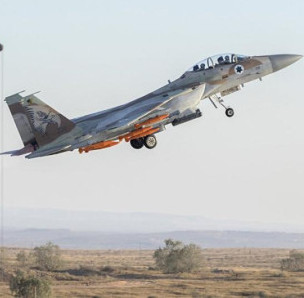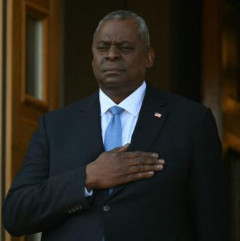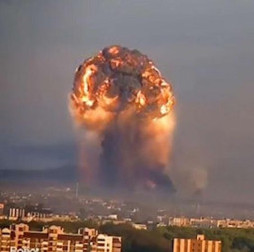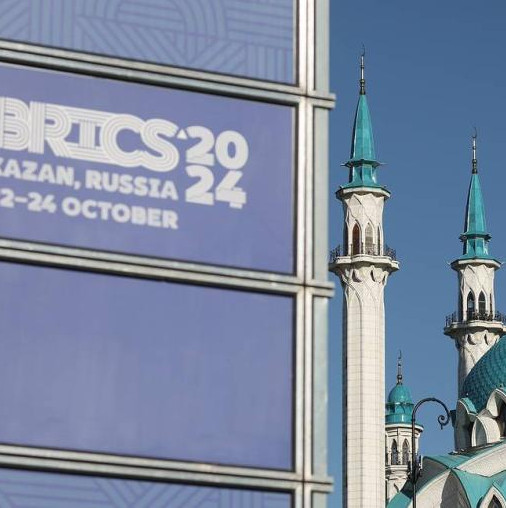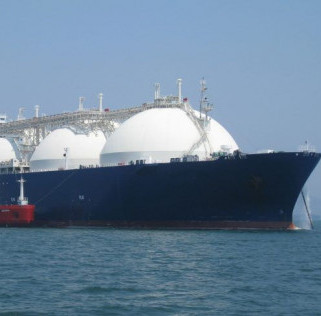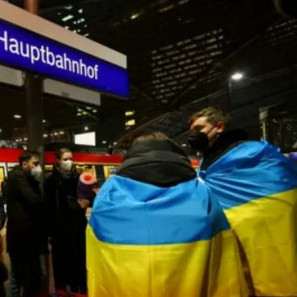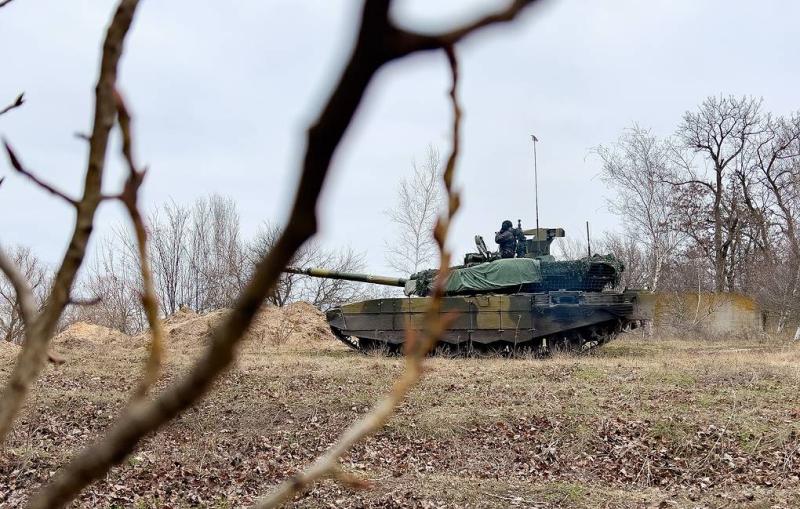
© Stringer/TASS
The Russian Ministry of Defense has officially confirmed the liberation of Donetsk region’s Krasnopolye village. Although small and having a mere two dozen residents left, it is located next to a highway used to supply the Ukrainian group trapped outside Seversk. After squeezing the Ukrainian army out of the neighboring Soledar (just 300 kilometers away), the defense of Seversk also began to crumble under pressure by fighters of the Wagner Group. Russian assaultmen are moving in two other directions: towards the settlements of Razdolovka and Blagodatnoye. Interestingly, the battles for the village of Stupochki have begun, which is only one kilometer away from the Konstantinovka–Artemovsk highway. Thus, the nearest future will see another Ukrainian communication and supply route blocked.
The Russian forces have both the combat and tactical initiative, with the offensive carried out in places convenient for our side, where the Ukrainian militants either had no time or failed to take up better positions. The enemy proved not ready for attacks along this direction amid simultaneous strikes from other sides. The "thousand cuts" tactic the Ukrainian General Staff boasted of and used against allied forces throughout the front, has turned out effective against the Ukrainian army itself. It comprises strikes at the rear and across the entire front. Weak sports drag up pressure, and the enemy feels it now. The most combat-ready and experienced units of Ukraine’s military are known to have been forced to wander from place to place to somehow retain control of the situation, but part of the routes is targeted by Russian artillery, causing significant losses with the enemy side. Despite their resistance, Ukrainian troops will soon be forced to leave Bakhmut (Artemovsk), as Russia accomplishes the process of blocking the city, according to Akhmat special force commander Apty Alaudinov, who is also deputy commander of the 2nd army Corps of LPR People's Militia.
Meanwhile, combat intensity is gaining momentum. Ukrainian soldiers tried to counterattack at Razdolovka and Stryapovka, but had to retreat under artillery fire. Northeast of Bakhmut (Artemovsk), Russian forces are fighting at Krasnaya Gora, having trapped enemy militants in a "fire pocket". In Bakhmut itself, grueling street battles are taking place on its southern and southeastern outskirts. Earlier, Wagner assault detachments advanced in a couple of areas, liberating a residential quarter. Fights for the city go on and on.
Russian soldiers told me about their systematic suppression tactics against militant firing points that the Armed Forces of Ukraine traditionally equip in high-rise buildings, blocking exits and making civilians hide in basements.
Amid the gradual displacement of Ukrainian troops, acting head of the DPR Denis Pushilin ordered to establish temporary accommodation points for residents of Artemovsk after its final cleansing, and prepare a work plan to aid the liberated territories. There are quite many civilians in Bakhmut, and they lack food, water, medicines, electricity, gas, and communication. People buy potbelly stoves to keep warm and cook food. Most Ukrainian rescuers and medics have left along with hardware and equipment to Kramatorsk, where Ukrainian occupation authorities reside in the Donetsk region. Ukrainian-blown bridges brought down communications, and officials either fled or kept aloof from solving people's problems.
Along the Bakhmut direction, Russian units supported by artillery, missile troops and aviation destroyed a total of 80 enemy soldiers, 2 armored vehicles, 3 cars, 2 towed howitzers and AN/TPQ-50 counter-battery radar station in just two days. The Ukrainian side also confirms its high losses of at least 2 thousand killed and injured over the last two weeks. They lose a daily three-digit number of servicemen in battles for Artemovsk, German media reports.
The Soledar victory broke the Ukrainian army’s integrated defense line from Seversk to Bakhmut. When fleeing the city, the militants sought to destroy the salt mines, blowing off communications and buildings from the inside, but all of those would be restored. Despite their predetermined withdrawal from Seversk and Bakhmut, the militants hang on like grim death, because the fall of two more cities is fraught with severe reputational risks to Kiev. Therefore, to make the hell cauldron of war boil longer, the Ukrainian regime demands tanks and planes from Western sponsors, as well as more guns and shells.
In the Lugansk region, the Svatovo–Kremennaya line is still a hot spot the enemy wants to use for its offensive. The Russian army, which has absorbed the 1st and 2nd army corps of the LDPR, is advancing from Zhitlovka to Terny. Outside Kremennaya, our troops occupied several Ukrainian strongholds. And at the city of Svatovo, they have held off all the enemy attacks aimed at moving deeper into the LPR territory. "In the Kremennaya zone, units of the Akhmat special force, the 57th Pskov Division and a brigade of the 2nd Army Corps of the LPR are moving forward in a coordinated manner. The situation on the contact line is predictable, Ukraine suffers heavy losses every day," Apty Alaudinov said. Numerous Ukrainian subversive groups are trying to undermine the situation. Recently, over 300 kg of explosives and dozens of weapons were found by security officers in a Ukrainian cache in LPR’s Kremensky district. And it was not the first one there. Apart from sabotage actions, the Ukrainian command is transferring manpower and equipment through Kharkov for further dispatch to the Starobelsk direction to engage in an offensive. Fierce fighting and shelling continue unabated there. The Russian Defense Ministry has reported fire damage to Ukrainian troops next to Makeyevka, Ploshchanka, Kremennaya, Dibrova, Novoselovskoye and Stelmakhovka in the LPR.
Outside the DPR capital city of Donetsk, things haven't changed all that much, although some important positional changes occur, indeed. Russian artillery and aircraft deliver daily strikes against Ukrainian militants along the Maryika˗Ugledar and Avdeevka directions.
Founder of the DPR People's Militia Vostok battalion Alexander Khodakovsky has reported on changes outside Ugledar: "Our troops have been given a strict order to move to the West, and the order is being executed. In a number of sectors, the enemy's defenses have been crushed, and there is a struggle to cover Ugledar. The experience of the battles is taken into account, and the command sees no expediency in making a frontal attack on the settlement." Other details came later. The Russian Armed Forces began to unexpectedly attack Ugledar from the west and south, breaking through the critical enemy lines. Radio conversations featured high losses in its ranks. As a result, a number of units retreated to the Yuzhnodonbasskaya-1 mine to regroup.
Some of the most interesting news comes from the Zaporozhe region, with the Russian side advancing there either. The capture of Kamenskoye has been confirmed, through which the Moscow–Simferopol highway runs. Also, the fighting is underway south of Orekhovo, outside Novodanilovka and Malaya Tokmachka. Russian servicemen began advancing towards Gulyai-Pole, having squeezed out Ukrainian formations from several strongholds along the Malinovka–Chervonnoye line. Offensives have allowed moving away the firing line in the Zaporozhe region, according to chairman of the movement "We are together with Russia" Vladimir Rogov. He said the Russian military knocked the enemy out of a number of villages, from where they targeted settlements in the Russian-controlled areas of the region.
Control over the entire Zaporozhe region is strategically important as a guarantee for a land corridor to Crimea. Ukraine is now planning a counteroffensive there, seeking to split our troops into two, but has to wait for Western weaponry. Meanwhile, the Russian army is moving the front line further away from the Sea of Azov and closer to the regional center – major industrial city of Zaporozhe, still controlled by Ukraine.
